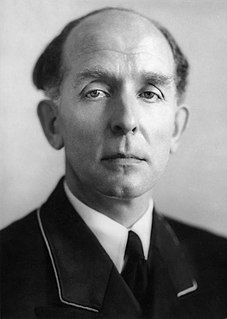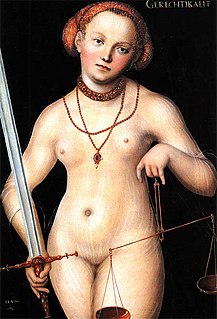
Roland Freisler was a jurist and judge of Nazi Germany. He was State Secretary of the Reich Ministry of Justice, and President of the People's Court. He was also an attendee at the Wannsee Conference in 1942, which set in motion the Holocaust.

Decapitation is the complete separation of the head from the body. Such an injury is fatal to humans and most animals, since it deprives all other organs of the involuntary functions that are needed for the body to function, while the brain is deprived of oxygenated blood and blood pressure.

Albert Pierrepoint was an English hangman who executed between 435 and 600 people in a 25-year career that ended in 1956. His father, Henry, and uncle Thomas were official hangmen before him.

Charles-Henri Sanson, full title Chevalier Charles-Henri Sanson de Longval, was the royal executioner of France during the reign of King Louis XVI, and High Executioner of the First French Republic. He administered capital punishment in the city of Paris for over forty years, and by his own hand executed nearly 3,000 people, including the King himself.

Franz Gürtner was a German Minister of Justice in Adolf Hitler's cabinet, responsible for coordinating jurisprudence in the Third Reich. He provided official sanction and legal grounds for a series of actions under the governments of Franz von Papen, Kurt von Schleicher, and Adolf Hitler from 1932 until his death in 1941.

A sword of justice is a ceremonial sword used as insignia of a monarch's supreme judicial power. In some cases this may have been an executioner's sword that was no longer used for executions, becoming instead a ceremonial one.

The Scharfrichterhaus in Passau, Germany, is designated as a national historical treasure and was built circa 1200. Located on "Milk Street", it was the official residence for the Scharfrichter (executioner) of the city of Passau. It is now a jazz and cabaret stage on which political cabaret is performed.
Capital punishment in Sweden was practiced until 1910. It is now outlawed by the Swedish Constitution which clearly states that capital punishment, corporal punishment, and torture are strictly prohibited. At the time of the abolition of the death penalty in Sweden, the legal method of execution was beheading.
Johann Reichhart was a state-appointed judicial executioner in Bavaria, Germany from 1924–1946. During the Nazi Germany era, he executed numerous people who were sentenced to death for resisting National Socialism.
Capital punishment remained in Polish law until April 1, 1997, but from 1989 there was a moratorium on executions, with the last execution taking place one year earlier. The death penalty is now prohibited in Poland for all offences.

Vasily Mikhailovich Blokhin was a Soviet Russian Major-General who served as the chief executioner of the Stalinist NKVD under the administrations of Genrikh Yagoda, Nikolai Yezhov, and Lavrentiy Beria.

Aribert Ferdinand Heim was an Austrian SS doctor, also known as "Dr Death". During World War II he served at the Mauthausen-Gusen concentration camp in Mauthausen, killing and torturing inmates by various methods, such as direct injections of toxic compounds into the hearts of his victims.

Lorenz Schwietz was Royal Prussian executioner from 21 June 1900 to 29 January 1914. Responsible for carrying out capital punishment in the Prussian provinces, he executed a total of 120 to 123 people, primarily by beheading with an axe, but also with guillotines.

Operation Rumford was a British Commando raid during the Second World War. It was carried out over the night of 25/26 August 1944, by the Belgian No. 4 Troop of No. 10 (Inter-Allied) Commando who had returned to England in June and were selected to capture the French Isle of Yeu only to find during a reconnaissance that the Germans had already left.
Friedrich Reindel was Royal Prussian executioner from 1873 to 1898. Responsible for carrying out capital punishment in the Prussian provinces, he executed a total of 213 people by beheading with an axe.
Carl Gröpler was Royal Prussian executioner from 1906 to 1937. Responsible for carrying out capital punishment in the Prussian provinces, he executed a total of at least 144 people, primarily by beheading with an axe, but also with guillotines. Gröpler was one of the most famous executioners in Germany.















